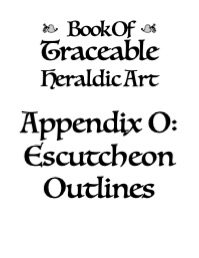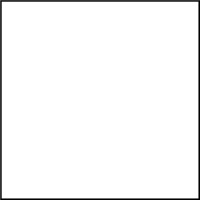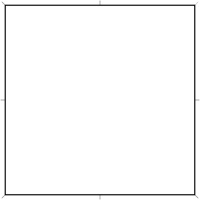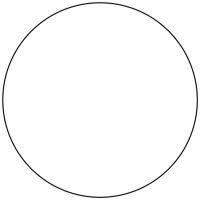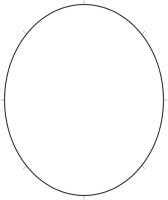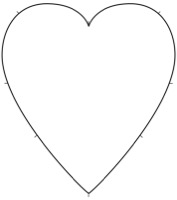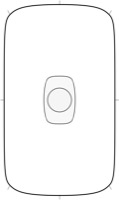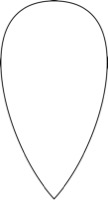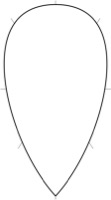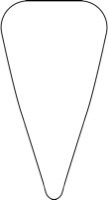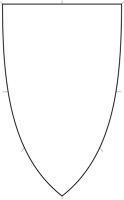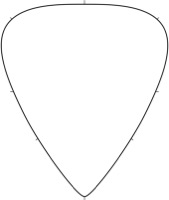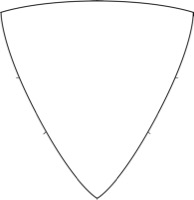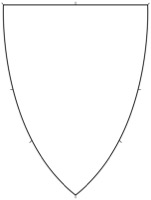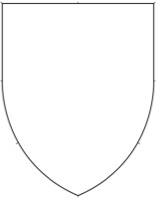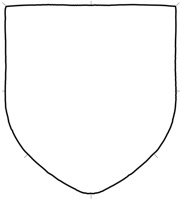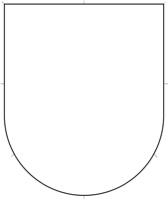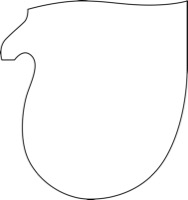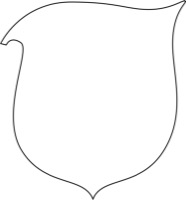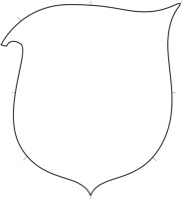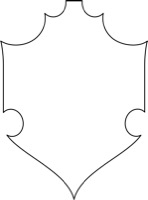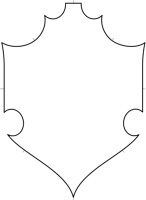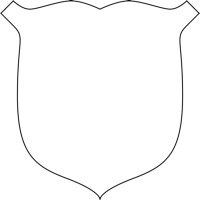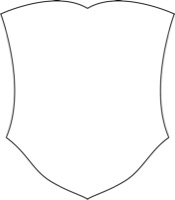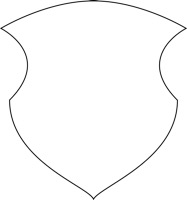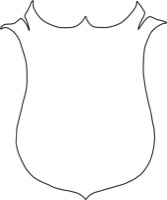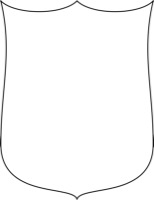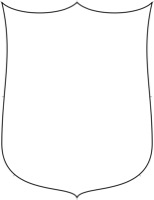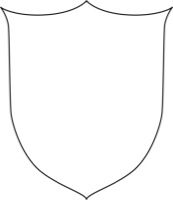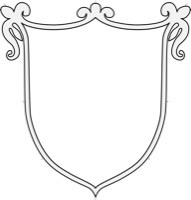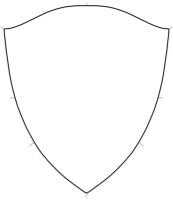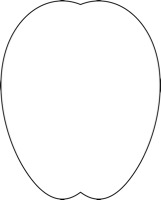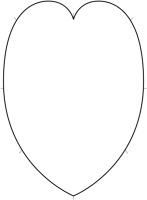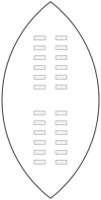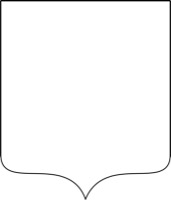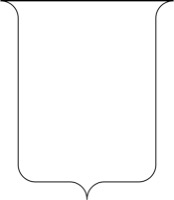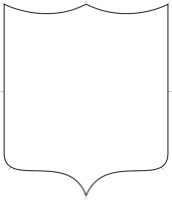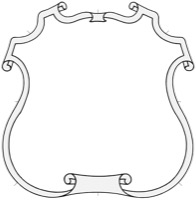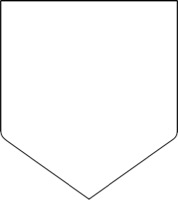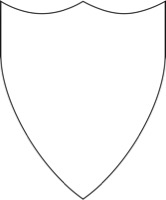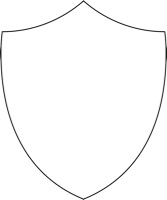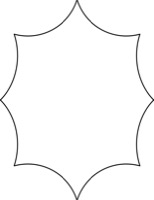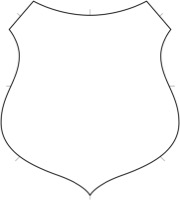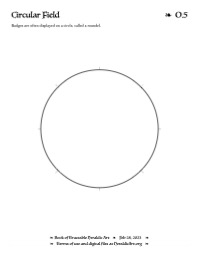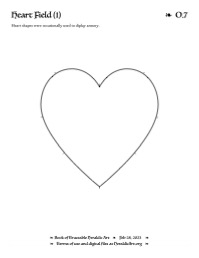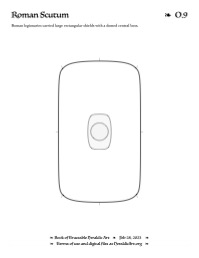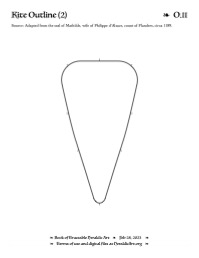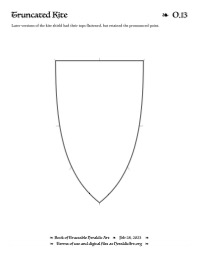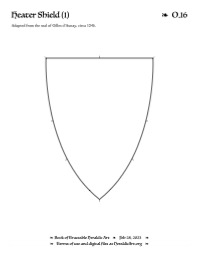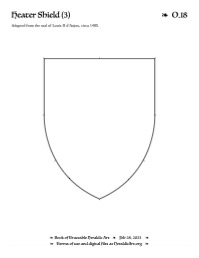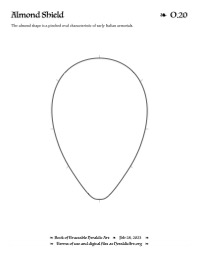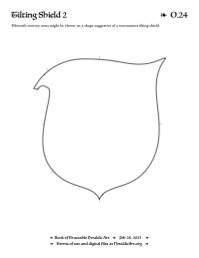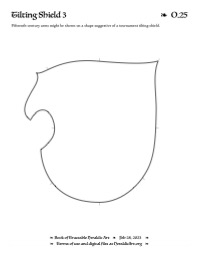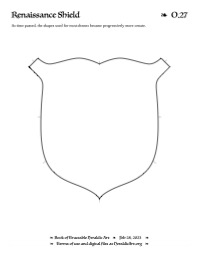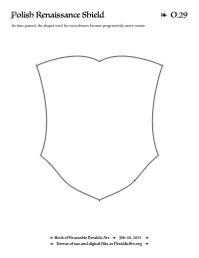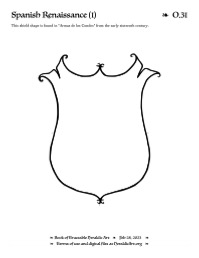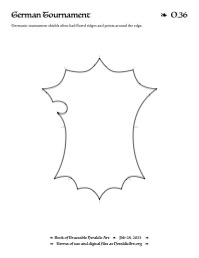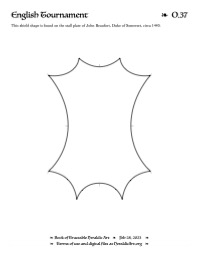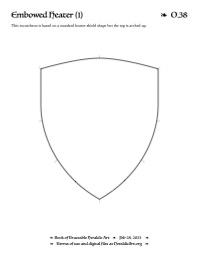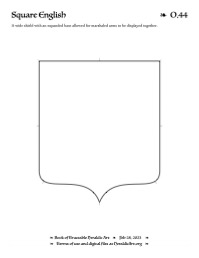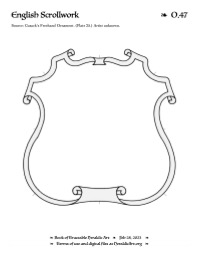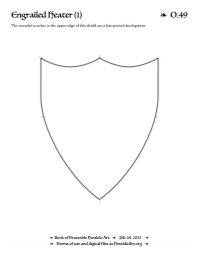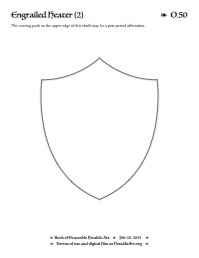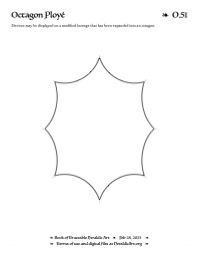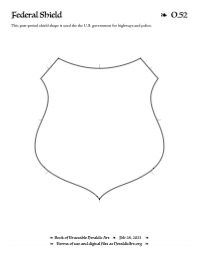52 Entries
•
Display:
Contents |
Details |
Pages
| Items
•
Item Shape:
Field | Surround
Combined PDF file (52 pages; 227KB)
-
Cover Page
(PDF,
PNG)
O.1
-
Device Outline
(PDF,
PNG; Field PNG, SVG; Surround PNG, SVG)
O.2
-
Square Field
(PDF,
PNG; Field PNG, SVG, PDF; Surround PNG, SVG, PDF)
O.3
-
Lozenge Field
(PDF,
PNG; Field PNG, SVG, PDF; Surround PNG, SVG, PDF)
O.4
-
Circular Field
(PDF,
PNG; Field PNG, SVG, PDF; Surround PNG, SVG, PDF)
O.5
-
Oval Field
(PDF,
PNG; Field PNG, SVG, PDF; Surround PNG, SVG, PDF)
O.6
-
Heart Field (1)
(PDF,
PNG; Field PNG, SVG; Surround PNG, SVG)
O.7
-
Heart Field (2)
(PDF,
PNG; Field PNG, SVG; Surround PNG, SVG)
O.8
-
Roman Scutum
(PDF,
PNG; Field PNG, SVG, PDF; Surround PNG, SVG, PDF)
O.9
-
Kite Outline (1)
(PDF,
PNG; Field PNG, SVG; Surround PNG, SVG)
O.10
-
Kite Outline (2)
(PDF,
PNG; Field PNG, SVG; Surround PNG, SVG)
O.11
-
Kite Outline (3)
(PDF,
PNG; Field PNG, SVG; Surround PNG, SVG)
O.12
-
Truncated Kite
(PDF,
PNG; Field PNG, SVG, PDF; Surround PNG, SVG, PDF)
O.13
-
Triangular Shield (1)
(PDF,
PNG; Field PNG, SVG; Surround PNG, SVG)
O.14
-
Triangular Shield (2)
(PDF,
PNG; Field PNG, SVG; Surround PNG, SVG)
O.15
-
Heater Shield (1)
(PDF,
PNG; Field PNG, SVG; Surround PNG, SVG)
O.16
-
Heater Shield (2)
(PDF,
PNG; Field PNG, SVG; Surround PNG, SVG)
O.17
-
Heater Shield (3)
(PDF,
PNG; Field PNG, SVG; Surround PNG, SVG)
O.18
-
Heater Shield (4)
(PDF,
PNG; Field PNG, SVG; Surround PNG, SVG)
O.19
-
Almond Shield
(PDF,
PNG; Field PNG, SVG, PDF; Surround PNG, SVG, PDF)
O.20
-
Iberian U-Shaped Shield
(PDF,
PNG; Field PNG, SVG; Surround PNG, SVG)
O.21
-
German U-Shaped Shield
(PDF,
PNG; Field PNG, SVG; Surround PNG, SVG)
O.22
-
Tilting Shield
(PDF,
PNG; Field PNG, SVG; Surround PNG, SVG)
O.23
-
Tilting Shield 2
(PDF,
PNG; Field PNG, SVG; Surround PNG, SVG)
O.24
-
Tilting Shield 3
(PDF,
PNG; Field PNG, SVG; Surround PNG, SVG)
O.25
-
Italian Tilting Shield
(PDF,
PNG; Field PNG, SVG; Surround PNG, SVG)
O.26
-
Renaissance Shield
(PDF,
PNG; Field PNG, SVG; Surround PNG, SVG)
O.27
-
Foliate Renaissance Shield
(PDF,
PNG; Field PNG, SVG; Surround PNG, SVG)
O.28
-
Polish Renaissance Shield
(PDF,
PNG; Field PNG, SVG; Surround PNG, SVG)
O.29
-
German Renaissance Shield
(PDF,
PNG; Field PNG, SVG; Surround PNG, SVG)
O.30
-
Spanish Renaissance (1)
(PDF,
PNG; Field PNG, SVG; Surround PNG, SVG)
O.31
-
Spanish Renaissance (2)
(PDF,
PNG; Field PNG, SVG; Surround PNG, SVG)
O.32
-
Spanish Renaissance (3)
(PDF,
PNG; Field PNG, SVG; Surround PNG, SVG)
O.33
-
Italian Renaissance
(PDF,
PNG; Field PNG, SVG, PDF; Surround PNG, SVG, PDF)
O.34
-
Horsehead Shield
(PDF,
PNG; Field PNG, SVG; Surround PNG, SVG, PDF)
O.35
-
German Tournament
(PDF,
PNG; Field PNG, SVG, PDF; Surround PNG, SVG, PDF)
O.36
-
English Tournament
(PDF,
PNG; Field PNG, SVG, PDF; Surround PNG, SVG, PDF)
O.37
-
Embowed Heater (1)
(PDF,
PNG; Field PNG, SVG; Surround PNG, SVG)
O.38
-
Embowed Heater (2)
(PDF,
PNG; Field PNG, SVG; Surround PNG, SVG)
O.39
-
Moorish Adarga
(PDF,
PNG; Field PNG, SVG; Surround PNG, SVG)
O.40
-
Spanish Adarga
(PDF,
PNG; Field PNG, SVG; Surround PNG, SVG)
O.41
-
Italian Adarga
(PDF,
PNG; Field PNG, SVG; Surround PNG, SVG)
O.42
-
Nguni Shield
(PDF,
PNG; Field PNG, SVG; Surround PNG, SVG)
O.43
-
Square English
(PDF,
PNG; Field PNG, SVG; Surround PNG, SVG)
O.44
-
Late-Period English
(PDF,
PNG; Field PNG, SVG; Surround PNG, SVG)
O.45
-
Engrailed English
(PDF,
PNG; Field PNG, SVG; Surround PNG, SVG)
O.46
-
English Scrollwork
(PDF,
PNG; Field PNG, SVG; Surround PNG, SVG)
O.47
-
Pentagonal English
(PDF,
PNG; Field PNG, SVG; Surround PNG, SVG)
O.48
-
Engrailed Heater (1)
(PDF,
PNG; Field PNG, SVG; Surround PNG, SVG)
O.49
-
Engrailed Heater (2)
(PDF,
PNG; Field PNG, SVG; Surround PNG, SVG)
O.50
-
Octagon Ployé
(PDF,
PNG; Field PNG, SVG; Surround PNG, SVG, PDF)
O.51
-
Federal Shield
(PDF,
PNG; Field PNG, SVG; Surround PNG, SVG)
O.52
Device Outline §
Devices are generally submitted on a standard shield outline, known as an escutcheon.
Square Field §
Badges are submitted on a square outline, even if they are fieldless.
Lozenge Field §
Devices may be submitted on a lozenge, a less-martial alternative to the shield outline.
Circular Field §
Badges are often displayed on a circle, called a roundel.
Oval Field §
Devices may be displayed an oval shape known as a cartouche.
Heart Field (1) §
Heart shapes were occasionally used to diplay armory.
Roman Scutum §
Roman legionaries carried large rectangular shields with a domed central boss.
Kite Outline (1) §
Tall shields with a round top and a long tapered point were typical in the 11th C..
Kite Outline (2) §
Source: Adapted from the seal of Mathilde, wife of Philippe d'Alsace, count of Flanders, circa 1189.
Truncated Kite §
Later versions of the kite shield had their tops flattened, but retained the pronounced point.
Triangular Shield (1) §
Source: Adapted from the seal of Robert de Chartres, circa 1193.
Triangular Shield (2) §
Source: Adapted from the seal of Gautier de Chatéron, circa 1210.
Heater Shield (1) §
Adapted from the seal of Gilles d'Aunay, circa 1245.
Heater Shield (2) §
Adapted from the seal of Philippe III of France, circa 1285.
Heater Shield (3) §
Adapted from the seal of Louis II d'Anjou, circa 1403.
Almond Shield §
The almond shape is a pinched oval characteristic of early Italian armorials.
Iberian U-Shaped Shield §
In Spain and Portugal, arms were usually displayed on an escutcheon with a round base.
German U-Shaped Shield §
In German areas, the round base was sometimes combined with sloping sides.
Tilting Shield §
Fifteenth-century arms might be shown on a shape suggestive of a tournament tilting shield.
Tilting Shield 2 §
Fifteenth-century arms might be shown on a shape suggestive of a tournament tilting shield.
Tilting Shield 3 §
Fifteenth-century arms might be shown on a shape suggestive of a tournament tilting shield.
Italian Tilting Shield §
This shield shape is found in Venete con le Loro Armi from the early sixteenth century. .
Renaissance Shield §
As time passed, the shapes used for escutcheons became progressively more ornate.
Foliate Renaissance Shield §
As time passed, the shapes used for escutcheons became progressively more ornate.
Polish Renaissance Shield §
As time passed, the shapes used for escutcheons became progressively more ornate.
German Renaissance Shield §
Spanish Renaissance (1) §
This shield shape is found in "Armas de los Condes" from the early sixteenth century.
Spanish Renaissance (2) §
Spanish Renaissance (3) §
Italian Renaissance §
This shield shape is found in Stemme Veneziane from the mid-sixteenth century.
Horsehead Shield §
Italian Renaissance armorials sometimes used a testa di cavallo, or horse-head shield.
German Tournament §
Germanic tournament shields often had fluted ridges and points around the edge.
English Tournament §
This shield shape is found on the stall plate of John Beaufort, Duke of Somerset, circa 1440.
Embowed Heater (1) §
This escutcheon is based on a standard heater-shield shape but the top is arched up.
Embowed Heater (2) §
This escutcheon is based on a standard heater-shield shape but the top is arched up.
Artist: Ajir Tsagaan.
Moorish Adarga §
A rounded, two-lobed shape derived from Berber calvary shields.
Adapted from a photo of Kunsthistorisches Museum Vienna's item HJRK C 195. (Grenada, circa 1490.)
Spanish Adarga §
A rounded, two-lobed shape derived from Berber calvary shields.
Adapted from the painting "Saint Vincent and Saint Valerius in Prision." (Spain, circa 1495.)
Italian Adarga §
A rounded, two-lobed shape derived from Berber calvary shields.
Source: Cappugi 200. (Italy, eighteenth century.)
Nguni Shield §
An oval shield with pointed ends found throughout southern Africa.
Square English §
A wide shield with an expanded base allowed for marshaled arms to be displayed together.
Late-Period English §
A rectangular shield with small flared corners provided space for complex Tudor designs
Engrailed English §
The rounded notches in the upper edge of this shield are a late-period decelopment.
Engrailed Heater (1) §
The rounded notches in the upper edge of this shield are a late-period decelopment.
Engrailed Heater (2) §
The curving peak on the upper edge of this shield may be a post-period affectation.
Octagon Ployé §
Devices may be displayed on a modified lozenge that has been expanded into an octagon.
Federal Shield §
This post-period shield shape is used the the U.S. government for highways and police.
Foliate Renaissance Shield
Polish Renaissance Shield
German Renaissance Shield
Foliate Renaissance Shield
Polish Renaissance Shield
German Renaissance Shield

